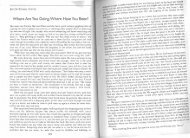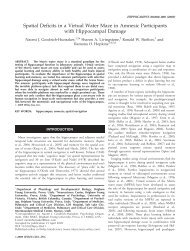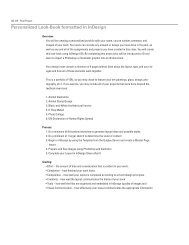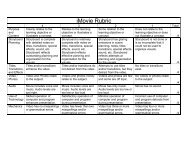Ahnentafel Report - Southern Illinois University
Ahnentafel Report - Southern Illinois University
Ahnentafel Report - Southern Illinois University
- No tags were found...
Create successful ePaper yourself
Turn your PDF publications into a flip-book with our unique Google optimized e-Paper software.
Ancestors of Roy Melvin Bearden-WhiteThomas, his first-born, is the stuff of legend. Supposedly, the boy and his mother, Smiths first wife, weresnatched by Indians sometime between 1740 and 1745. Mrs. Smith died in captivity, but Thomas remainedwith the Indians, eventually adopting their culture.From time to time, Jeremiah would seek information about his son from the myriad traders and hunters whopassed by his homeplace heading to and from Winchester. Some said they remembered seeing the boy, butcould never pinpoint his whereabouts.In his later years, Smith received word from Jacob Shade, a local Revolutionary War veteran, that his sonwas living with the Catawba tribe in western North Carolina. Summarily, he dispatched a friend with amessage for Thomas, asking him to come home, for he, Smith, was getting old. Thomas, it is said, rejectedhis father's entreaty, saying that he was content living with the Indians.Later local historians, T.K. Cartmell, for one, tell a different story. Thomas, Cartmell maintains, went to livewith his mothers people in South Carolina and was killed in the Revolutionary War.Whatever the case, Jeremiah died in 1787, without ever seeing his first-born son again. However, his place inlocal history is secure as one of the first men to tame the lands west of the mountain wall in old FrederickCounty.Adrian OConnor is editorial page editor of The Winchester Star.#- Back Creek Farm, Gore, VA: The plantation house was built around 1742. The original log house builtby Captain Smith is still present today in the front half of the structure. It is believed to be one of the oldesthouses in Frederick County, present day. The house sets up on a knoll overlooking the roadside which wasthe first wagon road constructed in old Frederick County. So, when Captain Jeremiah Smith was not battlingIndians with the militianman in Old Frederick County or being a guide for early surveyors by Lord Fairfax,he was building a road. This road was ordered to be built by Orange County Court from James Coudy'sresidence, now Capon Bridge, to Isaca Parkins Mill, now known as Winchester. This road was theforerunner for the great wagon road between Winchester and Romney. Part of this pioneer road is still in usetoday (RT 50). From 1729 to 1742, prior to the road being built, only trails and paths existed for travelersgoing between Winchester, Virginia to South Branch Valley Region in West Virginia. The famous "OldWagon Road" ran past Captain Smith's house.In 1777, a Mill was constructed and operated by Harrison Taylor. He was also known as "honest oldTaylor." The Mill set just below Captain Smith's house right off the Old Wagon Road. A short distanceaway on the left side of the road was Taylor's house on land he purchased from Captain Smith. This houseis still present and inhabitable. The Mill became famous after Pulitzer Novelist, Willa Cather, a great, greatgranddaughter of Captain Smith's, portrayed it as a site in her novel, "Sapphirra and the Slave Girl."- A roadside marker in Lost City, West Virginia, provides historical information on a famous battleJeremiah fought with a band of 20 men in the spring of 1756 near Lost City in current Hardy County, WestVirginia.# Note:(Research):Captain Jeremiah Smith’s Deed to Sons Andrew, George, and Jonathan:"This Indenture of three parts made this 29th day of March in the year of our Lord one thousand EightHundred and ten Between Andrew Smith of Frederick County and State of Virginia of the one part, and44
















